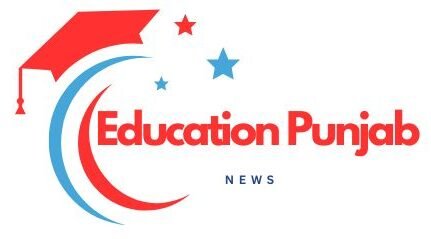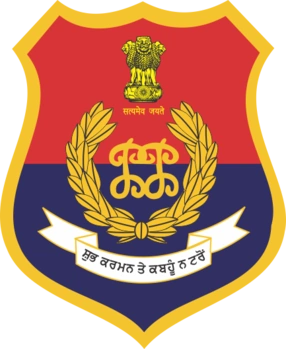
Revamping Punjab’s Government Schools: Success Stories and Challenges.
Punjab, a vibrant state in northern India with a population exceeding 30 million, has embarked on an ambitious journey to transform its government schools. This transformation is driven by a commitment to improving educational access, quality, and equity for millions of students. Over the past few years, Punjab’s Department of School Education has introduced innovative programs, upgraded infrastructure, and tackled systemic barriers to ensure that government schools become centers of academic excellence. Despite notable successes, challenges such as funding constraints, teacher shortages, and societal barriers persist. This article explores the transformation of Punjab’s government schools, highlighting key initiatives, success stories, ongoing challenges, and answers to frequently asked questions to provide a comprehensive understanding of this educational revolution.
The Transformation Journey
Punjab’s government schools have historically faced issues like inadequate infrastructure, low enrollment, and poor learning outcomes. However, recent reforms under the leadership of Chief Minister Bhagwant Singh Mann and Education Minister Harjot Bains have shifted the narrative. The state has invested heavily in modernizing schools, integrating technology, and fostering innovative teaching practices. According to posts on X, Punjab has allocated ₹730 crore to revamp school infrastructure, resulting in significant upgrades across thousands of schools. These efforts align with the National Education Policy (NEP) 2020, which emphasizes equitable access, skill-based learning, and holistic education.
Innovative Programs Driving Change
- Schools of Eminence Program
Launched to transform 117 government senior secondary schools into centers of academic excellence, the Schools of Eminence program has a proposed budget of ₹200 crore. It focuses on comprehensive infrastructure development, including state-of-the-art ICT (Information and Communication Technology) labs, artificial intelligence courses, and top-notch sports facilities. The program also offers specialized coaching for competitive exams, empowering students to compete nationally. By fostering well-rounded individuals, this initiative addresses both academic and socio-economic challenges in Punjab. - Punjab Young Entrepreneurs State Scheme – Business Blasters
Introduced in November 2022 and expanded in October 2023, this flagship initiative encourages entrepreneurial skills among students. It provides seed funding and mentorship to help students develop business ideas, fostering creativity and financial literacy. The program has become a catalyst for socio-economic development, aligning education with real-world skills. - Digital Empowerment Initiatives
Punjab is bridging the digital divide by providing Fiber-to-Home (FTTH) connections with 100 MBPS speed to all government schools. Additionally, over 2,262 smart classrooms have been established, equipped with interactive boards and digital learning tools. These advancements ensure that students, even in remote areas, have access to modern educational resources. - Enrollment Campaigns
A state-wide enrollment campaign launched in February 2023 has led to a 17.3% surge in pre-primary class enrollment. By engaging communities and addressing demographic challenges, this initiative has brought thousands of children into the education system, particularly from marginalized backgrounds. - Teacher Training Reforms
Punjab has prioritized teacher professional development by sending educators to prestigious institutions like IIM (Indian Institute of Management) and international training programs in Finland. These efforts aim to equip teachers with modern pedagogical skills, enhancing classroom engagement and student outcomes.
Infrastructure Upgrades: A New Look for Schools
Infrastructure improvements have been a cornerstone of Punjab’s education reforms. According to posts on X, over 10,000 classrooms have been built or upgraded, 2,976 new toilets constructed, and 7,166 renovated to ensure hygiene and accessibility. Additionally, 1,400 kilometers of boundary walls have been erected across 8,000 schools, enhancing safety and aesthetics. The provision of free textbooks to 2.68 million students and transportation facilities with a ₹21 crore budget ensures equitable access, particularly for girls and students in rural areas. These upgrades have transformed government schools into modern learning environments, boosting parental confidence and student enrollment, which increased by 15% in 2021 despite the pandemic.
Success Stories
Punjab’s reforms have yielded inspiring success stories. The state topped the Education Ministry’s Performance Grading Index (PGI) in 2021, evaluated across 70 parameters, including learning outcomes and infrastructure. This achievement, driven by the state’s education secretary, involved rationalizing teacher postings, upgrading infrastructure, and leveraging digital and analog avenues. The introduction of smart classrooms and ICT labs has empowered students like those in rural Punjab to access global learning resources, narrowing the urban-rural divide. Programs like Business Blasters have produced young entrepreneurs who are launching startups, contributing to Punjab’s economy. Additionally, the focus on girls’ education through transportation and conditional support has increased female enrollment, with initiatives like the Mega PTM (Parent-Teacher Meeting) in December 2023 fostering stronger community ties.
Ongoing Challenges
Despite these achievements, Punjab’s education system faces persistent barriers:
- Funding Constraints
Education funding in India, including Punjab, remains below the recommended 6% of GDP, hovering around 2.8–3.1%. This limits the scale and sustainability of reforms, with over 52% of Punjab’s education budget allocated to salaries and pensions, leaving less for infrastructure and innovation. - Teacher Shortages and Quality
While teacher training has improved, shortages persist, particularly in rural areas. The reliance on outdated teaching methods and rote learning in some schools hinders critical thinking and creativity, as noted in broader Indian education critiques. - Socio-Economic Barriers
Punjab’s socio-economic challenges, including declining agricultural incomes and drug issues among youth, impact school attendance and retention. Marginalized communities, such as Dalits and OBCs, face systemic barriers like caste-based discrimination and financial burdens, leading to higher dropout rates. - Learning Outcomes
Despite infrastructure upgrades, learning outcomes remain a concern. Annual Status of Education Reports (ASER) indicate that many students struggle with basic reading and arithmetic skills after years in school, highlighting the need for pedagogical reforms. - Administrative Challenges
Local administrative agencies sometimes fail to take ownership of reforms, slowing implementation. Resistance from teachers’ unions and bureaucratic delays further complicate the process.
The Way Forward
To sustain and expand these reforms, Punjab must address funding gaps through public-private partnerships (PPPs) and innovative financing models like education vouchers. Strengthening teacher recruitment and continuous training, modernizing curricula, and integrating vocational education will enhance learning outcomes. Community engagement, as demonstrated by the Mega PTM, should be scaled to build trust and accountability. Finally, leveraging data-driven monitoring, as seen in Punjab’s evidence-based reforms, will ensure targeted interventions and measurable progress.
Frequently Asked Questions (FAQs)
Q1: What is the Schools of Eminence program?
A1: The Schools of Eminence program is a Punjab government initiative to transform 117 senior secondary schools into centers of academic excellence with advanced infrastructure, AI courses, sports facilities, and competitive exam coaching.
Q2: How has Punjab improved school infrastructure?
A2: Punjab has invested ₹730 crore to build or upgrade 10,000 classrooms, construct 2,976 toilets, renovate 7,166, and establish 2,262 smart classrooms, alongside providing high-speed internet and transportation.
Q3: What are the main challenges facing Punjab’s government schools?
A3: Key challenges include limited funding, teacher shortages, socio-economic barriers, inconsistent learning outcomes, and administrative delays.
Q4: How has Punjab increased school enrollment?
A4: A 2023 enrollment campaign, free textbooks, and transportation facilities have boosted enrollment, with a 17.3% surge in pre-primary classes and a 15% overall increase in 2021.
Q5: What role do teachers play in Punjab’s reforms?
A5: Teachers are central to reforms, receiving advanced training in India and abroad to adopt modern teaching methods, improving classroom engagement and student outcomes.
Conclusion
Punjab’s transformation of government schools is a testament to the power of strategic investment and innovative policy. Programs like Schools of Eminence and Business Blasters, coupled with extensive infrastructure upgrades, have redefined public education in the state. While challenges like funding and teacher shortages persist, Punjab’s evidence-based approach and community engagement offer a model for other states. By continuing to address barriers and scale successful initiatives, Punjab is paving the way for a brighter, more equitable educational future.





